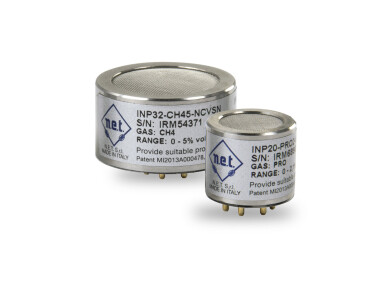Gas detector
Understanding the Principles of Catalytic Bead Technology
Jul 07 2014
Combustible gas detectors have been in development for many years, but one particular technology making waves in the industry is the catalytic bead system. They are currently the most commonly used gas detection systems because of their consistency and low cost. Within this article, we will be taking a closer look at the principles of catalytic bead technology.
How Catalytic Bead Technology Works
Within the detector is a bead, used as a sensor, and an electrically heated wire coil that is coated with Alumina and another element like Rhodium. When a combustible gas passes over the detector, the temperature of the catalytic bead increases. The sudden temperature change alters the resistance of the coil to equal the concentration of gas present. If the concentration is higher than a pre-programmed ‘safe’ level, an alarm is triggered to alert people in the vicinity of potential danger.
Keeping Up to Date with Gas Detection Technology
Just like anything else, catalytic gas detectors are not indestructible and therefore need to be maintained regularly. If exposed to poisons a catalytic detector can fail, so they should be regularly calibrated to ensure confidence in their ability to detect.
After installing a catalytic detector, it is important to perform weekly checks for the first six months. The codes of practice manual provided with the detector should give a good indication as to the optimal levels for the alarm and the environment. You may find that it takes two people to calibrate the detector - one to monitor the digital results and the other to expose it to gas. That said, if you have a more advanced or expensive catalytic detector, you may be able to operate and calibrate it solo.
In comparison to point infrared technology catalytic detectors are simple to use and maintain. They are more popular than other detectors, cost much less and are easy to re-calibrate which results in lower maintenance costs.
One disadvantage of using this technology is its high power intake which can be extremely costly for smaller operations. Catalytic detectors also need an oxygen supply and are vulnerable to poisoning by lead and other chemicals. In addition, the positioning of this type of detector is critical to how well it works. However, point infrared detectors only measure the amount of gas in a specified area, so it could be argued that optimal positioning of this device is even trickier.
To find out more about the advantages and disadvantages of combustible gas detectors, read the article Infrared vs. Catalytic Bead Technology: Pros and Cons.
Digital Edition
PIN 26.1 Feb/Mar 2025
March 2025
Analytical Instrumentation - Elemental Analysis for Quality and Process Control at Refineries, for Lubricants and Wear Metals in Engine Oils - Synthetic Lubricants: New Developments - Scaling...
View all digital editions
Events
Apr 27 2025 Portland, OR, USA
Apr 29 2025 Mumbai, India
Apr 29 2025 Edmonton, AB, Canada
May 05 2025 Houston, Tx, USA
May 06 2025 Nuremberg, Germany



















